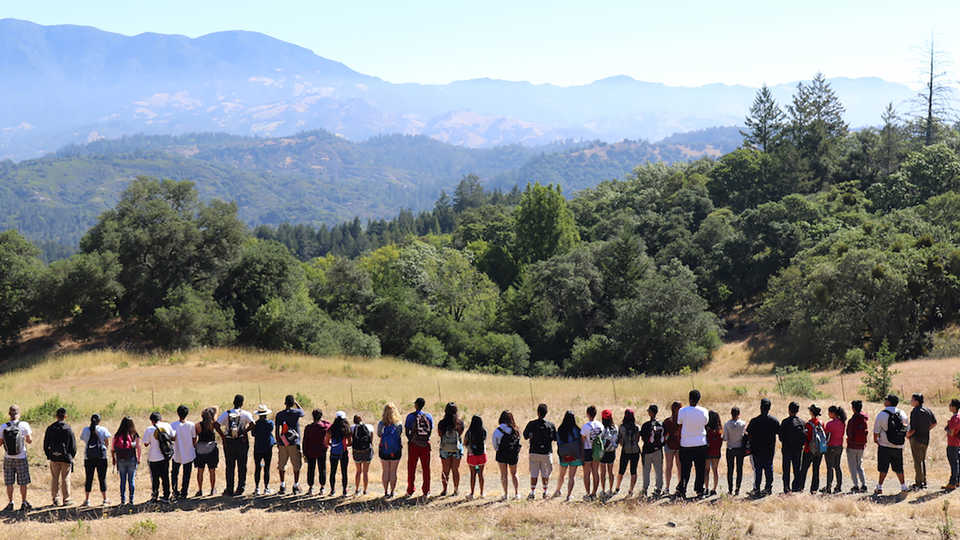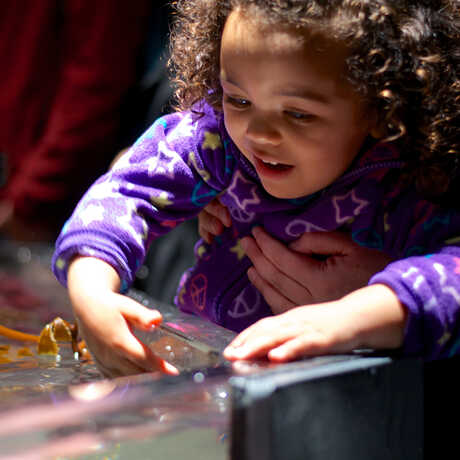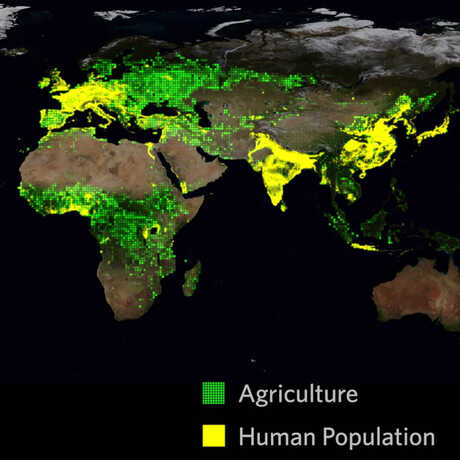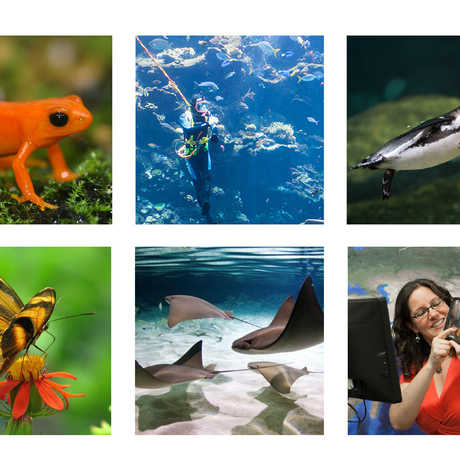Environmental Literacy Initiative

To achieve a sustainable future, we must build science and environmental literacy today.
As a leader in public education and science engagement, the Academy's Environmental Literacy Initiative aims to provide free, cutting-edge environmental and science education materials to everyone, with a special focus on K-12 teachers and afterschool programs.
Why Is Environmental Literacy Important?
Here's an alarming omen for our environmental future: K-12 students in the US rank 20th in science performance out of 35 developed countries.
If we fail to provide today's young learners with a strong foundation in science-based ecological principles, we're compromising their ability to tackle a world of environmental challenges, from climate change to ecosystem fragmentation to ocean acidification.
But if we nurture young minds' boundless curiosity for the world around them, their environmental literacy grows—and so do our chances for a sustainable future.
The Academy: An Environmental Literacy Launchpad
With only 13% of California schools integrating environmental education into their curricula, our teachers and students need all the resources they can get.
Luckily, the Academy is uniquely equipped to address this alarming deficit by leveraging our key strengths.
Our science and education credentials are unparalleled.
As both a research institution and a museum, the Academy is home to hundreds of world-renowned scientists and educators. Peer-reviewed science and academic rigor inform everything we do.
We produce high-quality learning experiences onsite and online.
From hands-on public programs to high-tech distance learning tools, the Academy excels at designing, producing, and distributing educational content to local museum visitors and global educators alike.
We collaborate with educators and experts around the world.
Working closely with teachers, school districts, and education experts, we strive to align our work with best practices and state and federal standards. Our new online resources are being used by teachers in all 50 states and 70+ countries.
Science Action Clubs
For over 10 million US kids, the last bell of the day doesn't mean last call for learning. Afterschool programs are an important part of an evolving educational ecosystem—with outdoor adventures often at the core of their curricula.
The Academy's Science Action Club (SAC) was created to fill a growing need for quality afterschool and summer STEM opportunities for 5th-8th graders. Since its inception in 2010, over 15,000 students in 17 states have participated in SAC, with a projected reach of 30,000 per year by 2020.
Games, experiments, and citizen science projects encourage SAC members to explore nature, connect with scientists, and imagine a sustainable future for the planet.
Science and Environmental Media Lab
As learning transcends classrooms, educational tools are expanding beyond textbooks.
The Science and Environmental Media Lab is the Academy's media production studio, where media producers, science visualization experts, educators, and students themselves join forces to produce professional-quality Flipside Science videos, planetarium shows, online teacher trainings, and virtual field trips.
This digital departure from science-education-as-usual is already hitting its stride, with over 3 million views across all our digital media offerings—and projected to surpass 17 million by 2020.
Through partnerships with leading learning platforms like Khan Academy and PBS LearningMedia, the Academy is committed to expanding the availability of our free programming to millions of teachers and students—increasing environmental literacy around the world.
Your gift helps support Academy research and programs, including school field trips for 130,000+ students annually.
Learn more about the Academy's Environmental Literacy Initiative.
The Academy is grateful to the following visionary donors for making the Environmental Literacy Initiative possible:
- Pisces Foundation
- S.D. Bechtel, Jr. Foundation
- W. Richard Bingham Family
- Genentech














